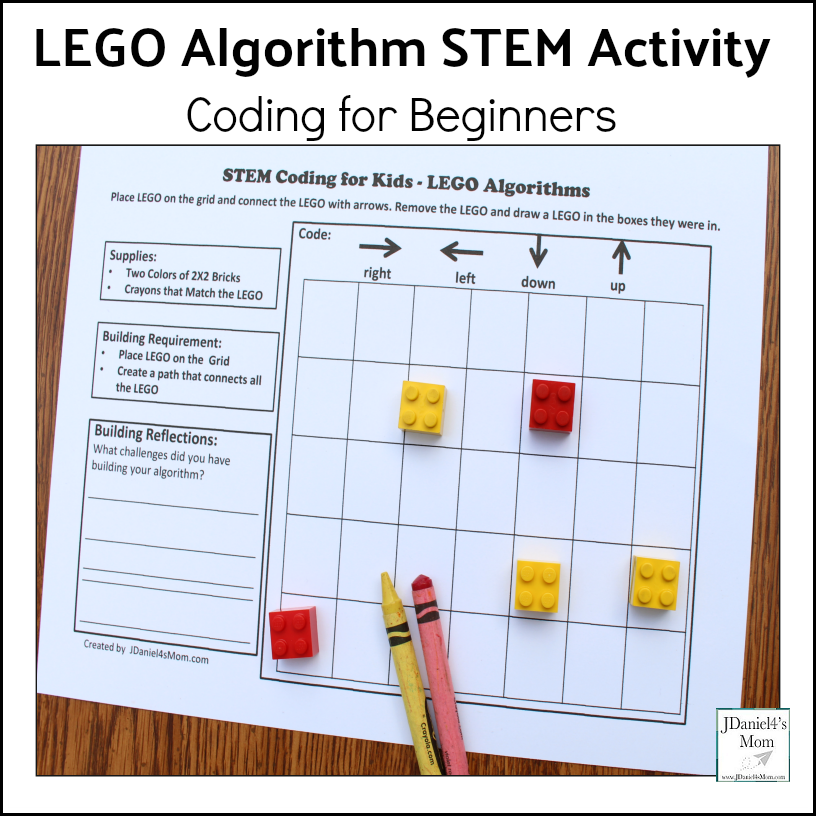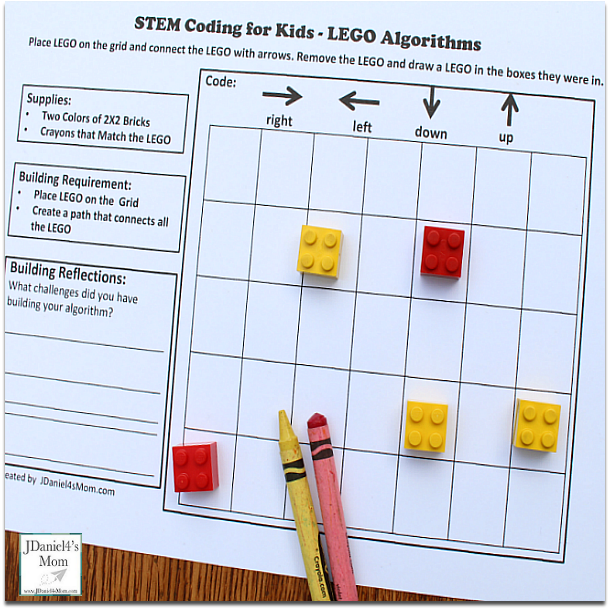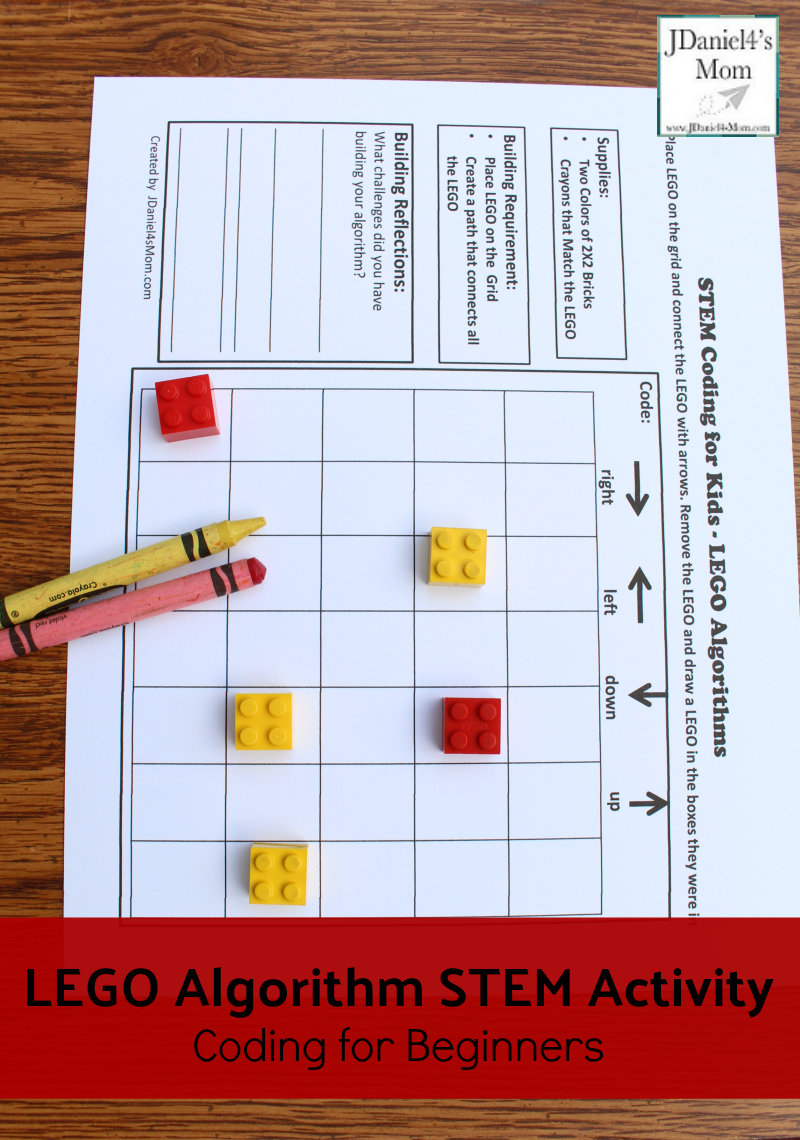
All week I have been sharing with your coding for beginners activities. At the beginning of the week with amazing programming and games online. Next, we looked at offline coding games for kids that you are going to want to try right now. Then I shared an activity called ABC’s of How to Read Binary that featured beads and a fun recording sheet. The last post I shared used cup stacking and a planning printable to create algorithms. Today’s post shares the final activity in the coding for beginners series. It looks at using LEGO to create algorithms.
Coding for Beginners LEGO Activity
Gathering the Activity Materials
The links below are affiliate links.
Before you get started you will need to print out the Coding for Beginners- LEGO Algorithms recording sheet. Your children will also need a collection of Lego 2×2 Bricks and 2 crayons for this activity. Each child will need a set of two or three LEGO in two colors. They will also need crayons that match the colors of the LEGO they are working with.

Getting Started
You will need to explain to your children that an algorithm is a series of events or steps that a computer uses to complete a task. They will be creating a path with LEGO and then creating an algorithm that could be used to recreate their path.
The first thing they will do is place their LEGO on the grid on the recording sheet. They will want to leave at least one square between their LEGO.

Once they have their LEGO where they want them, they will decide which one will start their path. Then they will draw arrows in the boxes connecting their start LEGO to the LEGO closest to it.
They will continue the arrow connecting process until they have created a path from the first LEGO to the last LEGO on their grid.
Finally, they will draw a LEGO under each LEGO that is the same color of that LEGO. They can color in the box and add the bumps to make it look like a real LEGO.
Checking Their Algorithm
Your children will need to invite another child to follow their algorithm or LEGO creation path by placing LEGO on the grid in the right order.








